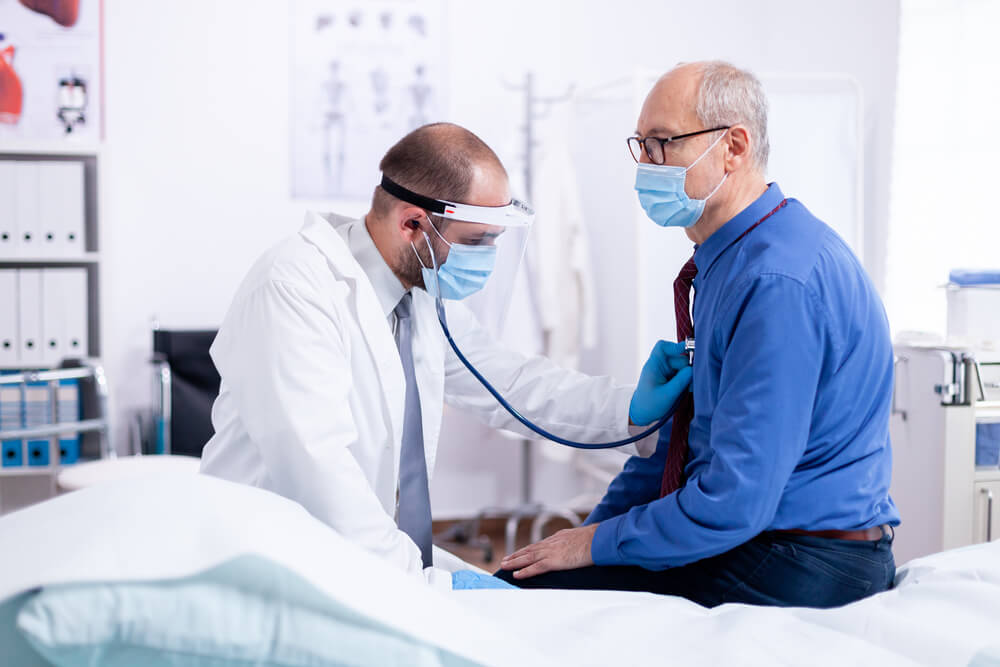In the exam room, discussion of COVID-19-related risks are evolving as we learn more about the underlying characteristics of this virus and disease. Through the analysis of >1,400 exam room conversations with specific discussion of COVID-19, our research team has identified tactics that physicians are using to educate patients on personal states of risk (e.g. underlying comorbidities and treatments used) and risk events (e.g. social distancing and wearing masks in public). It is critical that this topic be well understood to ensure effective communication across stakeholders, and we will be exploring the evolution of this topic in detail in an upcoming whitepaper. In the meantime, we invite you to read and listen to some of these observed themes in this VeriBlog.
Conversational roles shifted early for immunosuppressed patients
COVID risk conversations are frequently initiated by immunosuppressed patients, and when they do occur, are marked by a shift in patient role and footing. While patients are typically deferent to physicians during the in-office dialogue, COVID prompted a shift in the patient physician dialogue dynamic, with patients interjecting and engaging more during treatment discussions.
Treatment decisions and treatment concerns often prompted risk conversation with immunosuppressed patients. High-risk patients across the board expressed concern about the contribution their treatment (or potential treatment) had on their state of risk. They begin conversations to seek advice or share and confirm information, but in some cases they also brought up treatment in declarative, authoritative ways, for instance:
“I’ve been clear, or joints are good, but I’m holding [Cosentyx] now due to the COVID” (Psoriasis PT, May 2020)
In addition to bringing up treatment directly, immunosuppressed patients initiated discussion of risk by asking about their specific risk status:
“Okay, and then the other thing I had, was, you know, with all this coronavirus, the fact that I’m on prednisone, am I on more risk or less risk or…where do I stand?” (Osteoporosis PT, March 2020)
These patients are not just interested in abstract discussions of their personal risk; many, like this patient, want to learn about their comparative risk in a detailed manner. They want to know what “risk” actually means, and from where the risk originates.
Case Study: Dialogues with patients on, or considering, biologics
In the first few months of the pandemic, HCPs positioned biologics as immunosuppressing agents that would increase a patient’s risk of contracting COVID. While they did not necessarily push for patients to stop treatment, many did discourage new treatment starts or switches. No matter the outcome, the risk education discussion focused squarely on the risk originating from the medication itself. For instance, in the dialogue cited above with the patient reporting that she stopped treatment, the HCP expresses agreement with her decision: “you are around people; you’re high risk because of the biologics”.
A few months into the pandemic, as more empirical knowledge about COVID and biologics emerged, the discourse started to shift. Risk originating from an uncontrolled disease state began to displace, and in some cases supplant, discussions of risk from medication. For example, listen to how this doctor explains the risk concept to a patient who paused Humira because of the pandemic:
“The more important thing is you need to know that with the COVID-19, you should have called me about the Humira before you stop it yourself. Why? Because your risk of COVID-19 is much higher now with the flaring and inflammation. So if you get the COVID-19, you are one of the people who has high risk of getting sick. So really, you want to be careful now. Okay? It’s more and worse and higher risk than the Humira, by being on Humira by itself. So Humira itself does not increase your, your, your risk of getting the COVID-19. But being on Humira and controlling your inflammatory disease will put you at lower risk than, much lower risk than being off Humira and having flare of inflammatory problems” (Psoriatic Arthritis PT, July 2020)
In this example, the HCP draws a clear distinction between risk from treatment and risk from disease state, and weighing the two against each other, determines the risk of uncontrolled disease much higher than the risk of being on a biologic. Many HCPs failed, and continue to struggle, to make this point of education clear to patients when assessing whether to pause treatment or start new treatments. This dialogue gap leaves patients without a full picture of their risk status and holds back essential information for the patient to make an informed decision.
Expanding on Themes
Verilogue will be expanding on these observed themes with additional supporting examples and analysis in an upcoming whitepaper, in which we will also explore the current dynamic around risk education in the primary care setting. In addition, our research team is monitoring every exam room conversation with discussion of COVID-19 vaccination, to understand how, if at all, vaccine development may be impacting the course of the risk discussion. We expect to have additional information to share on this topic as vaccine development proceeds, and in the meantime, do you have any hypotheses around how the availability of a vaccine will impact the exam room conversation dynamic? If so, please let us know and we will be sure to consider this perspective as we develop future content.
Best of health,
-Verilogue

